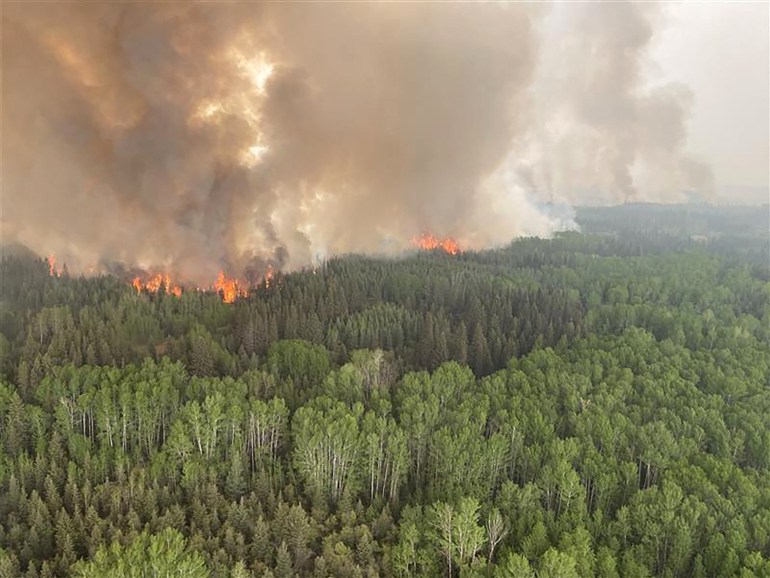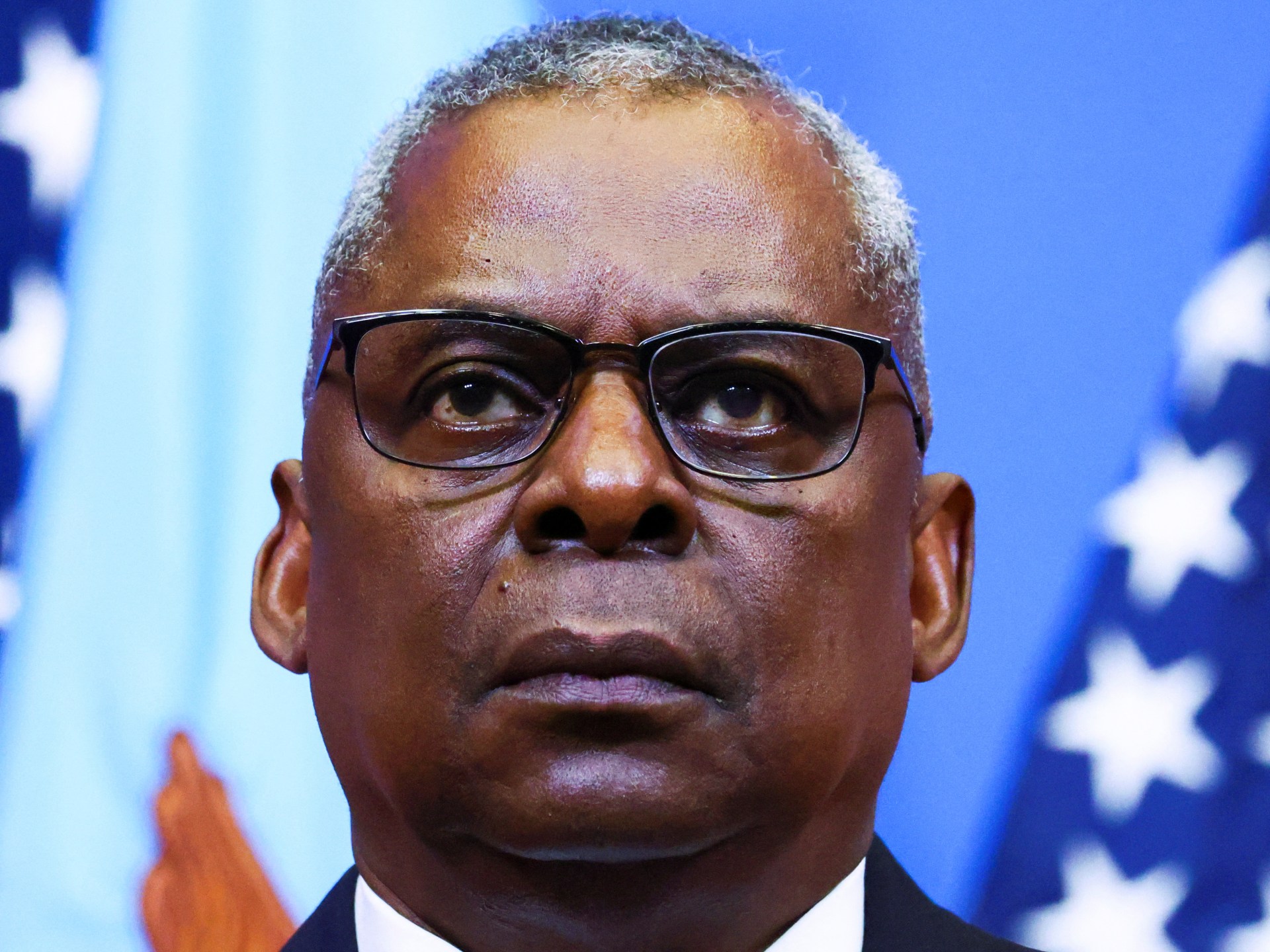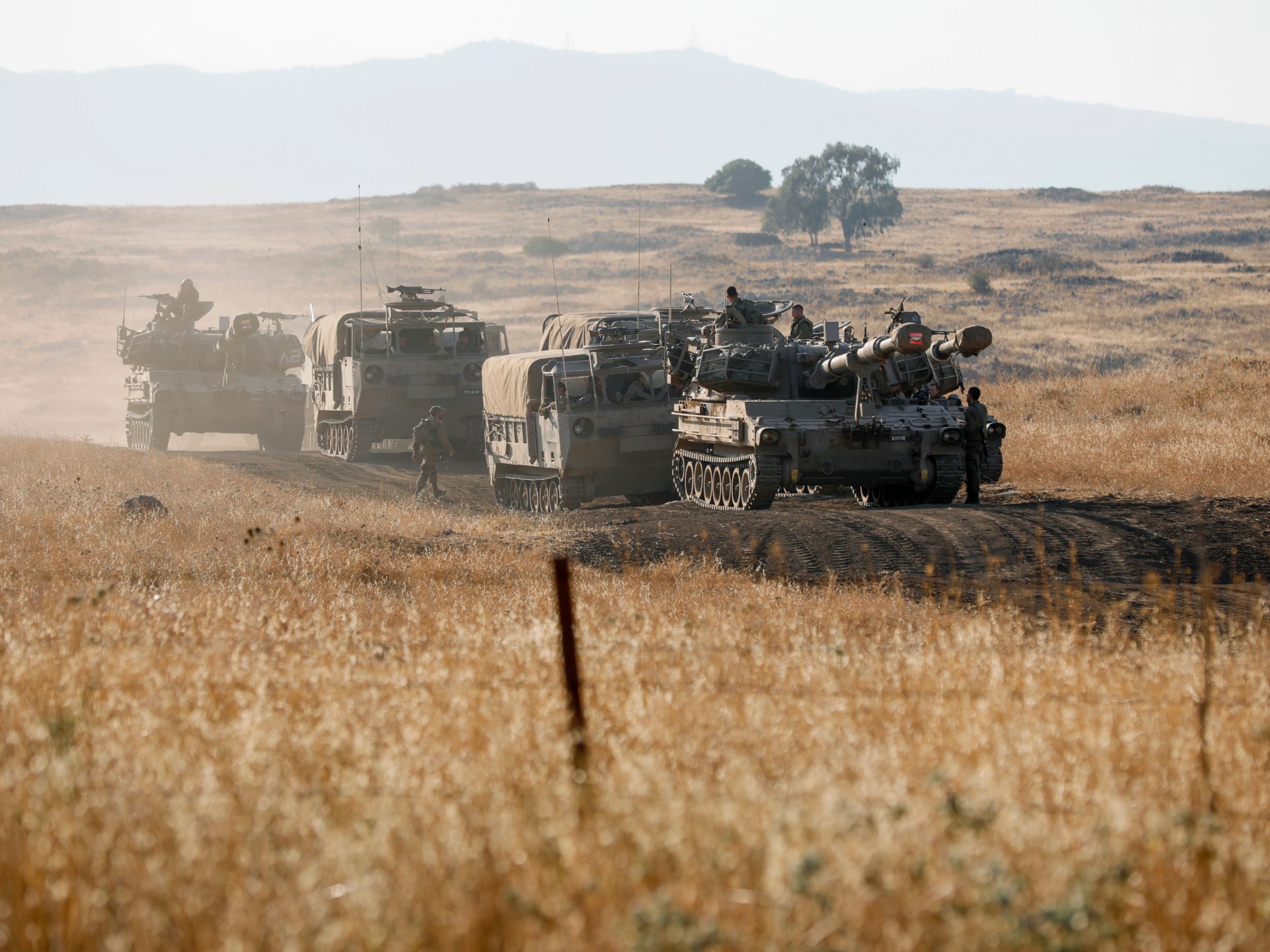Trudeau visits military personnel fighting Alberta wildfires | Environment News
Canadian Prime Minister Justin Trudeau has travelled to Alberta to show support for military personnel sent to the western province to battle wildfires that are still burning and have forced thousands to evacuate.
Trudeau arrived in the provincial capital of Edmonton on Thursday for an update on firefighting efforts.
Canadian soldiers were sent last week to help firefighting and recovery efforts, and more troops are expected to join in the coming days, according to the Alberta government.
Members of the Canadian Armed Forces “have been deployed to provide firefighting support, help evacuate isolated communities, and make sure people are safe”, Trudeau tweeted after his visit.
“Today, we stopped by to receive an update from those on the ground — and to thank them for the work they’re doing.”
The widespread blazes have marked an intense start to wildfire season in the oil-rich province, forcing more than 30,000 people out of their homes at one point and shuttering production of at least 319,000 barrels of oil equivalent per day, or 3.7 percent of national output.
Last week, as wildfires burned across Alberta, we approved the province’s request for federal assistance. @CanadianForces members have been deployed to provide firefighting support, help evacuate isolated communities, and make sure people are safe. Today, we stopped by to receive… pic.twitter.com/eiFzeO8TyN
— Justin Trudeau (@JustinTrudeau) May 15, 2023
The first 11 days of May have set seasonal heat records in several parts of Alberta, including Edmonton, according to Environment and Climate Change Canada.
The forecast for the province shows a cold front sweeping through starting on Tuesday evening that would bring gusty winds, a slight chance of a thunderstorm, but not much rain, said Sara Hoffman, a meteorologist with Environment Canada.
“We’re very concerned about the possibility of dry lightning in an area that’s already got a pretty high fire risk,” Hoffman said. Hot and dry conditions are expected to ramp up again from Friday and are unlikely to ease at least until early next week.
By Monday afternoon, 87 wildfires were still burning across the province, according to an Alberta Wildfire data tracker, with 25 of them considered out of control.
More than 19,000 people also had evacuated their homes as of Sunday, up from 16,500 on Friday.
Bill Blair, Canada’s minister of emergency preparedness, told reporters in Edmonton on Monday afternoon that weather conditions, particularly very high temperatures, were playing a major role in the continued fires.
“The fire activity here in Alberta has begun earlier than normally expected. It’s almost without precedent to have this level of fire activity in the province,” Blair said.
“It appears that these hot, dry, windy conditions could prevail over several days, and so clearly, we are here for the long haul.”

Many experts have pointed to climate change as a factor that has worsened extreme weather events such as wildfires, heatwaves and tropical storms around the world.
In 2016, forest fires in the Alberta oil sands region disrupted oil production, forced 100,000 residents out of Fort McMurray and pummelled the Canadian economy.
A brutal heatwave in the country’s westernmost province of British Columbia in 2021 led to hundreds of deaths. The heat also kicked off dozens of wildfires, forcing evacuations and burning entire communities to the ground.
On Sunday, Alberta Wildfires official Josee St-Onge said during a briefing that the peak burning period for Alberta, “which is when the temperatures are at their highest and the fuels are at their driest, is still in front of us”.
“It’s too soon to say when we’re going to see the peak of this wildfire season,” St-Onge said. “We are going to continue to be challenged.”




